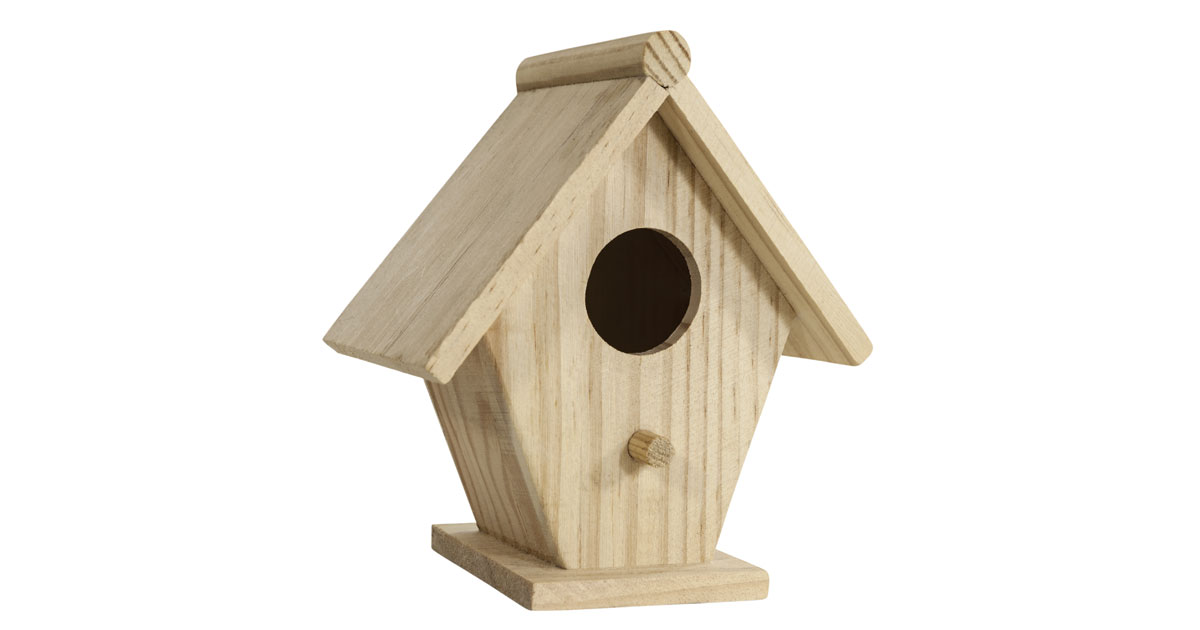Bird enthusiasts have two of the basic needs for bird survival already in place by hanging a feeder and growing native plants, as well as maintaining a bird bath. The next step is to consider adding shelter to your bird sanctuary. While a rectangular wooden box with an angled roof and entrance hole sounds simple enough, it’s essential to know what type of native birds frequently visit your location. As the landlord of a future number of houses, you may want to attract specific species. Similar to any house guest, some are messy, picky, or vacate days after arriving.
The Entrance Hole
Nearly 50 American bird species will nest in an artificial house, but the size of the perch and the diameter of the entrance hole matter to every species. Fearful of nighttime attacks from a variety of predators, or the loss of eggs, many birds will seek shelter using their own size opening.
Sparrows: A helper to gardeners, sparrowsoffer weed control by consuming large quantities of seeds; therefore, welcome this little bird to your paradise. The entrance requirement is a hole one-fourth inch in diameter. Additionally, you may attract a white-breastednuthatch. For the best environment, place the house 10 feet above ground in a wooded location.
Tip: Changing the entrance of an existing birdhouse requires only a thin square piece of wood. After measuring the intended size, cut the hole into a thin square piece of wood and nail all four corners to front of house, new hole over previous hole
Tip: Consider adding a hinged roof to prevent leaks and help you gain access to clean out the interior.
Bluebirds and Carolina wrens: Preferring a one-and-a-half-inch diameter hole without an exterior perch, bluebirds and Carolina wrens guard their houses and attack intruders. It is wise to place the house in a semi-secluded location, away from other shelters.
Tip: Research the dimensions of the house, which define the interior floor space and height. The right size ensures the shelter will provide adequate insulation to keep baby birds warm without smothering them in a cramped space.
Woodpeckers: Be warned, woodpeckers are feisty renters that prefer a 2-inch in diameter entrance; however, they also are known to chip away a narrow opening until it suits their particular needs.
Nesting Shelves
Housing for the robinsand barn swallowsonly requires an 8-inch by 8-inch hanging platform. Open to the air, it serves as a stable shelf to hold their nests.
Birdhouse Gourds
While wood is an accommodating material to construct a birdhouse with, consider the new experience of designing and perhaps painting your own house from the first step, by planting a birdhouse gourd seed. Since the plants require up to 110 days to produce a mature gourd, consider starting the seeds indoors four weeks before planting in late April to early May. In advance, ensure the plants have a sturdy trellis able to hold the weight. By the time the stem turns brown, the season will reveal signs of frost and the time to cut and prepare for drying. Typically, the process takes six weeks until the seeds are fully dry. You’ll have plenty of time to prepare your new birdhouses for the following spring!
Don’t Wait!
As soon as your birdhouses are available, seek out the best possible locations to hang them. In addition to establishing several nesting sites, many birds will continue to lay eggs if their initial effort failed because of poor weather, predators, or an infestation of parasites. In North Carolina, bluebirds, for instance, seek a nesting location and lay eggs between March and April. Across May through August, three clutches of eggs will hatch. Late Fall may be the best time to prepare your birdhouses for new tenants.
While you may want to invite birds to your yard to promote birdwatching, native birds, which include woodpeckers,are also voracious eaters, anxious to rid your yard and garden of pesky insects which fly, crawl, and slither. With the addition of birds, you’ll notice more abundant blooms in flowerbeds and more fruitful harvests. A win-win situation for both feathered friends and their admirers!
Next Month: Part 2. Creative Ways to Feed the Birds























